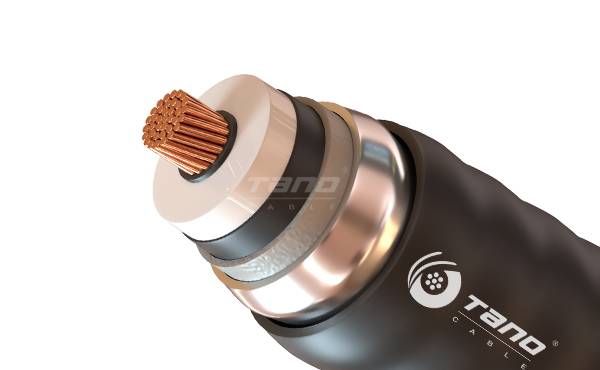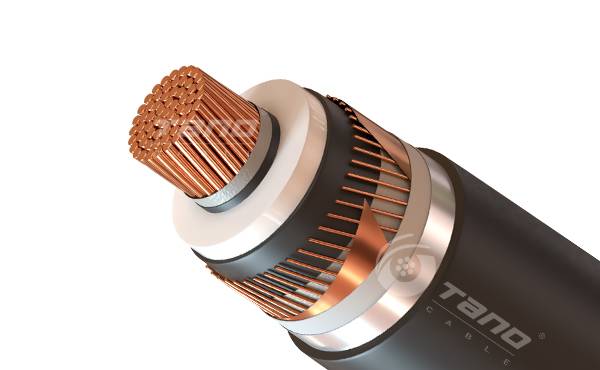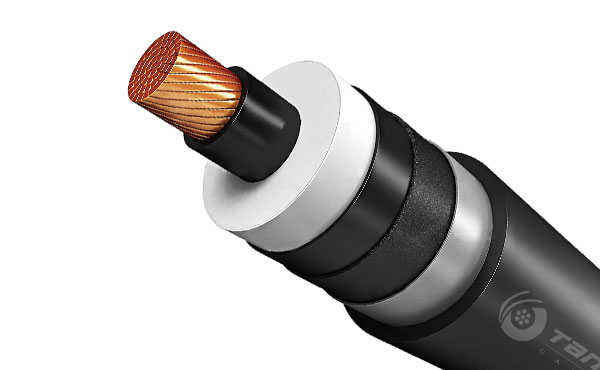22
Feb
A key breakthrough in the localization of high voltage DC cables
Share:
A key breakthrough in the localization of high voltage DC cables
Not long ago, "Key Technologies of ±500kV DC Cables" passed the subject of performance evaluation. The expert group believes that the research results have promoted technological progress in the field of DC grids in my country in terms of system operation and equipment development, and promoted the development of domestic high-end electrical equipment industry. This achievement has completely independent intellectual property rights, which strengthens the overall independent innovation capability of our country's high voltage DC cable technology.
What are the technical advantages of high voltage DC cables? What are the difficulties and challenges faced in the localization of High Voltage DC cables? What breakthroughs have been made in domestic ±500 kV DC cable technology?
What are the advantages of high voltage DC cables?
As the key equipment of flexible DC transmission technology, high voltage DC cables can be widely used in urban power grid transformation, cross-regional DC interconnection, high-cold area power transmission, offshore platform power supply, offshore wind power access, and island power supply. They have become long-distance and large-capacity The key development direction of flexible interconnection of large power grids for large-scale utilization of power transmission and new energy power.
High voltage DC cables are lower carbon, environmentally friendly, safer and more reliable than AC cables of the same voltage level. They can solve the power transmission problems in the large-scale utilization of new energy and regional interconnected power transmission, and improve the safety of the cable transformation of the transmission network in the process of urbanization. Enhance the power grid’s ability to resist natural disasters and operational reliability.
In the future, the construction of urban power grids and the development of offshore energy will have a huge demand for cables, especially high voltage DC cables. At present, the highest voltage level of high voltage DC land cable systems that have completed type tests worldwide is ±640 kV, and the highest voltage level of DC cable systems that have achieved commercial operation is ±320 kV. Germany has planned a ±525 kV DC cable transmission corridor with a total length of 6,400 kilometers. The United Kingdom has also planned 15 high voltage DC cable projects with a total length of more than 3000 kilometers. In my country, the Jiangsu Rudong ±400kV offshore wind power grid-connected DC cable project is under construction. With the rapid development of offshore wind power projects in Fujian and Guangdong, my country will become the world's second largest offshore wind power development market, and there is a great demand for high-voltage DC cables.
High voltage DC cables are lower carbon, environmentally friendly, safer and more reliable than AC cables of the same voltage level. They can solve the power transmission problems in the large-scale utilization of new energy and regional interconnected power transmission, and improve the safety of the cable transformation of the transmission network in the process of urbanization. Enhance the power grid’s ability to resist natural disasters and operational reliability.
In the future, the construction of urban power grids and the development of offshore energy will have a huge demand for cables, especially high voltage DC cables. At present, the highest voltage level of high voltage DC land cable systems that have completed type tests worldwide is ±640 kV, and the highest voltage level of DC cable systems that have achieved commercial operation is ±320 kV. Germany has planned a ±525 kV DC cable transmission corridor with a total length of 6,400 kilometers. The United Kingdom has also planned 15 high voltage DC cable projects with a total length of more than 3000 kilometers. In my country, the Jiangsu Rudong ±400kV offshore wind power grid-connected DC cable project is under construction. With the rapid development of offshore wind power projects in Fujian and Guangdong, my country will become the world's second largest offshore wind power development market, and there is a great demand for high-voltage DC cables.
What challenges are facing the localization of high voltage DC cables?
DC cables are divided into oil-filled cables, wrapped insulated cables and extruded insulated cables. Extruded DC cables currently mainly use polyethylene as the insulating medium. Polyethylene cable has strong and simple internal structure, convenient production and installation, and low operation and maintenance cost, which has attracted widespread attention in the industry.
Our country is the world's largest cable manufacturer, but its core material technology has long been dependent on imports. The manufacturing of cable insulation materials belongs to the typical "jamming" technology in the field of equipment manufacturing in my country. The gap between domestic and foreign high-voltage cable insulation materials restricts the development of my country's high-end electrical equipment independent and controllable and energy Internet.
The key to the research and development of high-voltage DC cable insulation materials is the basic raw material of polyethylene. Only by improving the comprehensive performance of the existing basic resin can insulating materials suitable for higher voltage cables be developed. At present, the domestic basic resin used in domestic insulation materials is far behind foreign countries in terms of cleanliness, breakdown field strength, and electrical conductivity. At the same time, domestic basic research on the compounding and crosslinking control technology of insulating materials, the ultra-purification process technology of insulating material batch preparation, and the temperature conductivity characteristics still need to be strengthened.
The design and manufacture of large cross-section DC cables are also one of the technical difficulties of high voltage DC cables. The insulation of the cable is thick, and it is difficult to control the stranding of the special-shaped conductor of the cable, the extrusion of the cable insulation and the subsequent insulation degassing. Because the domestic manufacturers' early-stage cabling process parameters are set based on imported materials, they have insufficient technical accumulation for domestic materials in terms of degassing and by-product control, which affects the quality stability of the cabling.
In addition, cable accessory insulation materials and installation technology are also one of the technical bottlenecks in the development of HVDC cables. The attachment interface has high field strength and large size, which has strict requirements on the installation process. The matching installation of cables and accessories is mainly completed by hand, and the installation period is long. The technical level of the workers has a greater impact on the quality of the accessories. There is also a gap between my country and foreign countries in terms of non-linear matching and regulation of the conductivity of accessory materials and cable materials, and interface pressure regulation during long-term operation.
Our country is the world's largest cable manufacturer, but its core material technology has long been dependent on imports. The manufacturing of cable insulation materials belongs to the typical "jamming" technology in the field of equipment manufacturing in my country. The gap between domestic and foreign high-voltage cable insulation materials restricts the development of my country's high-end electrical equipment independent and controllable and energy Internet.
The key to the research and development of high-voltage DC cable insulation materials is the basic raw material of polyethylene. Only by improving the comprehensive performance of the existing basic resin can insulating materials suitable for higher voltage cables be developed. At present, the domestic basic resin used in domestic insulation materials is far behind foreign countries in terms of cleanliness, breakdown field strength, and electrical conductivity. At the same time, domestic basic research on the compounding and crosslinking control technology of insulating materials, the ultra-purification process technology of insulating material batch preparation, and the temperature conductivity characteristics still need to be strengthened.
The design and manufacture of large cross-section DC cables are also one of the technical difficulties of high voltage DC cables. The insulation of the cable is thick, and it is difficult to control the stranding of the special-shaped conductor of the cable, the extrusion of the cable insulation and the subsequent insulation degassing. Because the domestic manufacturers' early-stage cabling process parameters are set based on imported materials, they have insufficient technical accumulation for domestic materials in terms of degassing and by-product control, which affects the quality stability of the cabling.
In addition, cable accessory insulation materials and installation technology are also one of the technical bottlenecks in the development of HVDC cables. The attachment interface has high field strength and large size, which has strict requirements on the installation process. The matching installation of cables and accessories is mainly completed by hand, and the installation period is long. The technical level of the workers has a greater impact on the quality of the accessories. There is also a gap between my country and foreign countries in terms of non-linear matching and regulation of the conductivity of accessory materials and cable materials, and interface pressure regulation during long-term operation.
What breakthroughs have been made in domestic ±500kV DC cable technology?
Cable development involves many links, and all core technologies need to be explored independently, making R&D difficult. In order to accelerate breakthroughs in the core technology of my country's DC cable system and insulation materials, Global Energy Internet Research Institute Co., Ltd. takes the lead, and universities, manufacturers, and research institutes within the United Nations are conducting research. The research team systematically carried out key technology research such as simulation design, material research and development, cable manufacturing, system matching, and test evaluation, and gradually broke through key technologies such as material space charge control and matching, cable extrusion roundness control and accessory key component design.
In the research and development of insulating materials, it is not particularly difficult to make samples in the laboratory. What is difficult is the process of getting the materials out of the laboratory and moving towards industrial mass preparation. From samples to products, from the "gram level" simulation in the laboratory to the "hundred kilogram level" test on the pilot production line, to the actual "ton level" produced by the company, the properties of materials usually undergo major changes. The research team coordinates the advantageous resources of manufacturing companies and testing units to participate in scientific research. In order to solve a major problem, the research team trial-produced hundreds of tons of material samples and thousands of meters of cable samples to achieve iterative optimization and performance improvement of materials and systems.
After repeated iterations of DC cable insulation materials and 9 types of DC cables, the research team broke through the technical bottlenecks such as the molecular structure control of the insulation base material, the improvement of the electric strength of the DC cable material and the control of the electric field, and the electrical conductance matching of the insulation material of the cable system. UHV DC cable system and insulation materials have overcome material impurities and defect control and batch preparation technology, large-size DC cables and accessories design, manufacturing, installation process, and accessory materials and structural optimization design and other series of problems, which are China's HVDC The engineering application of cables lays a solid foundation. The research team developed domestic ±500kV DC cable insulation materials and shielding materials, ±500kV DC cables (land cables) and accessories. In 2020, domestic insulation materials ±535 kV DC cables and high-voltage DC cable accessories have successively passed type tests, marking a breakthrough in my country's core technology of ultra-high-voltage DC cable systems and insulation materials.
In the Zhangbei Renewable Energy Flexible DC Grid Test and Demonstration Project, the ±535kV DC cable was used for demonstration. This is also the first engineering application of cross-linked polyethylene DC cables worldwide, promoting the formation of a complete technical chain of "development-equipment-application" of cable core materials.
The development of ±500kV DC cable systems and insulation materials broke the foreign technology monopoly and accelerated the pace of transformation and upgrading of my country's power equipment industry. The research team will continue to focus on high-end cable systems and insulation materials to carry out technical research, improve the core competitiveness of domestic DC cable systems and insulation materials, steadily realize the localization of core insulation materials, and promote the promotion of related industrial chains to high-value fields.
In the research and development of insulating materials, it is not particularly difficult to make samples in the laboratory. What is difficult is the process of getting the materials out of the laboratory and moving towards industrial mass preparation. From samples to products, from the "gram level" simulation in the laboratory to the "hundred kilogram level" test on the pilot production line, to the actual "ton level" produced by the company, the properties of materials usually undergo major changes. The research team coordinates the advantageous resources of manufacturing companies and testing units to participate in scientific research. In order to solve a major problem, the research team trial-produced hundreds of tons of material samples and thousands of meters of cable samples to achieve iterative optimization and performance improvement of materials and systems.
After repeated iterations of DC cable insulation materials and 9 types of DC cables, the research team broke through the technical bottlenecks such as the molecular structure control of the insulation base material, the improvement of the electric strength of the DC cable material and the control of the electric field, and the electrical conductance matching of the insulation material of the cable system. UHV DC cable system and insulation materials have overcome material impurities and defect control and batch preparation technology, large-size DC cables and accessories design, manufacturing, installation process, and accessory materials and structural optimization design and other series of problems, which are China's HVDC The engineering application of cables lays a solid foundation. The research team developed domestic ±500kV DC cable insulation materials and shielding materials, ±500kV DC cables (land cables) and accessories. In 2020, domestic insulation materials ±535 kV DC cables and high-voltage DC cable accessories have successively passed type tests, marking a breakthrough in my country's core technology of ultra-high-voltage DC cable systems and insulation materials.
In the Zhangbei Renewable Energy Flexible DC Grid Test and Demonstration Project, the ±535kV DC cable was used for demonstration. This is also the first engineering application of cross-linked polyethylene DC cables worldwide, promoting the formation of a complete technical chain of "development-equipment-application" of cable core materials.
The development of ±500kV DC cable systems and insulation materials broke the foreign technology monopoly and accelerated the pace of transformation and upgrading of my country's power equipment industry. The research team will continue to focus on high-end cable systems and insulation materials to carry out technical research, improve the core competitiveness of domestic DC cable systems and insulation materials, steadily realize the localization of core insulation materials, and promote the promotion of related industrial chains to high-value fields.
Previous article:
Next article:







